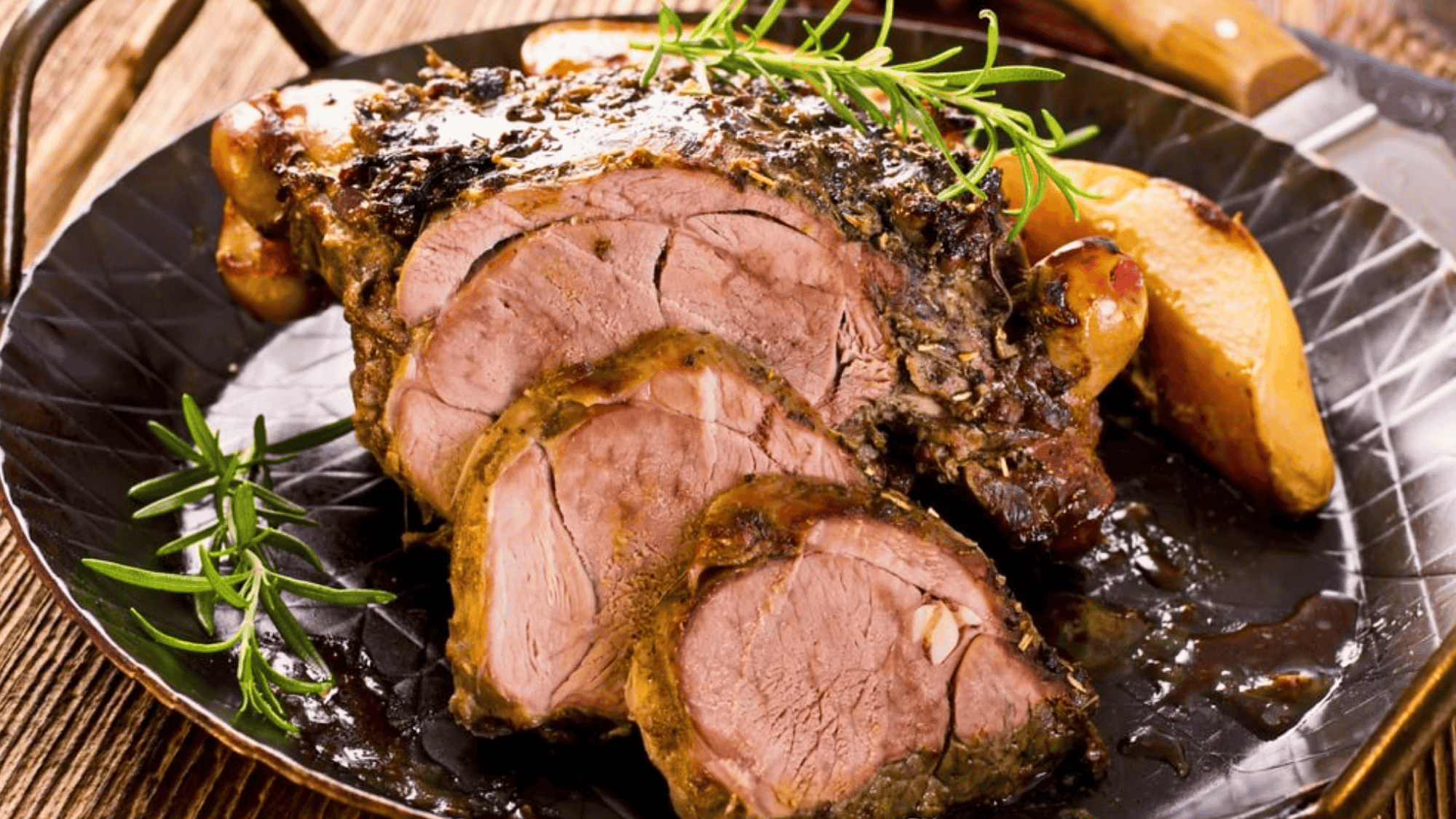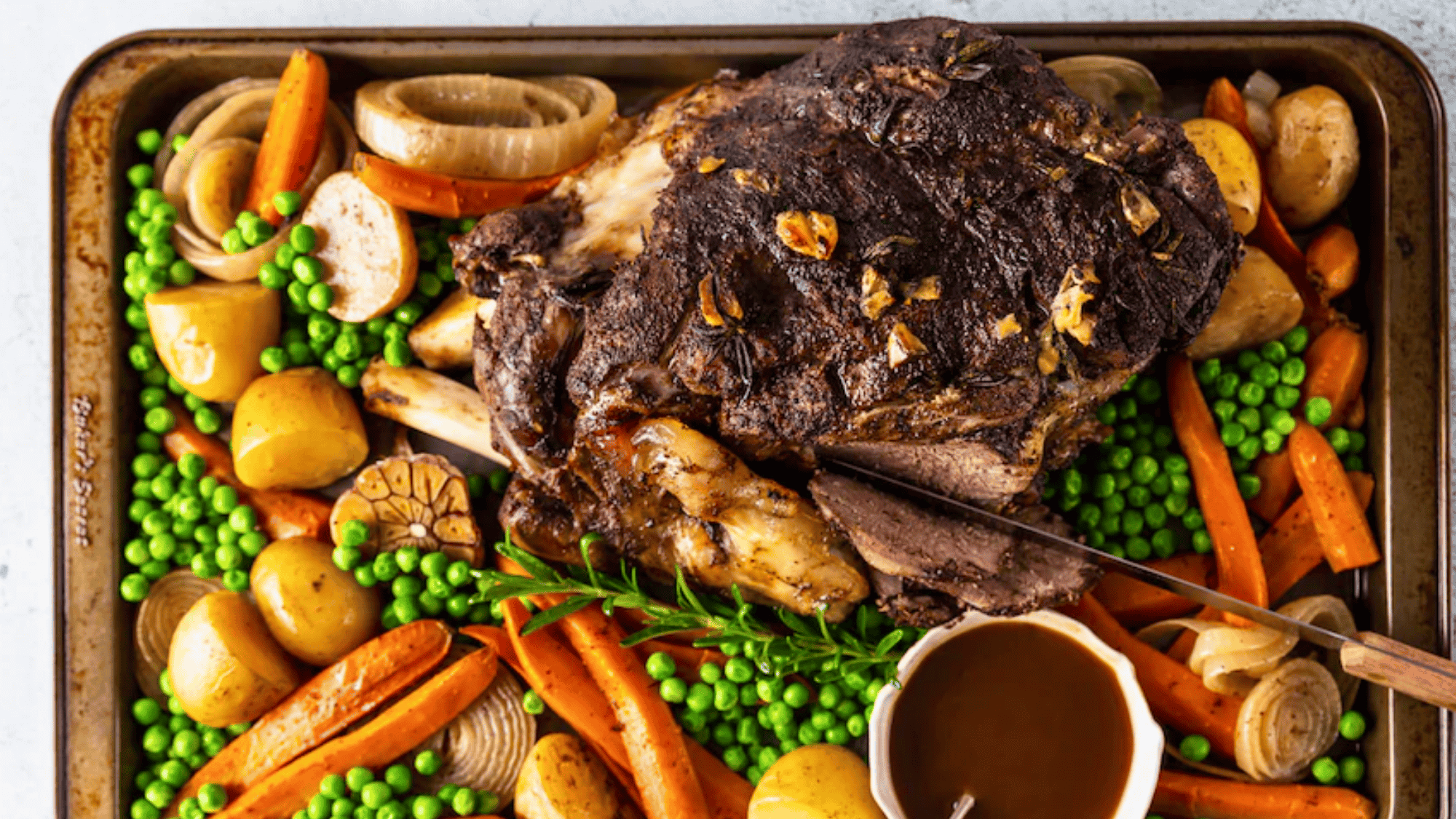When I think about lamb, I picture a special dinner: juicy chops or a slow-cooked stew that feels a little fancier than the usual chicken or beef.
But then the question pops up: Is lamb actually healthy, or just tasty? Many people wonder the same thing, especially if they’re trying to eat healthier or manage their cholesterol levels.
Lamb is renowned for its rich flavor, but behind that flavor lies a complex blend of nutrients, fats, and proteins that can impact your health in various ways.
In this blog, I will break down what makes lamb a good choice for you, where it might not be the best option, and how to enjoy it in a healthier way.
Quick Answer: Is Lamb Healthy?
Yes, lamb can be a healthy choice, but only if you enjoy it in moderation. It’s packed with important nutrients your body needs, like protein, iron, zinc, and vitamin B12.
These help support energy, build strong muscles, and maintain a healthy immune system. Compared to beef and pork, lamb can be a little leaner, especially if you choose the right cut.
Grass-fed lamb also has a bonus of omega-3 fatty acids, which are good for your heart.
But here’s the catch: lamb is still a red meat, and it comes with more saturated fat and cholesterol than lighter options like chicken or fish.
That doesn’t mean you have to avoid it; it just means portion size matters. Picking lean cuts and cooking them in a healthy manner (such as roasting or grilling) makes a significant difference.
So, the short answer is this: lamb can absolutely fit into a balanced diet. Think of it as a nutrient-rich, flavorful option that works best when it’s part of a varied menu rather than the star of every meal.
Lamb Nutrition at a Glance
Before deciding whether lamb is healthy, it’s helpful to examine what’s actually inside it. A typical 3-ounce serving of cooked lamb (about the size of a deck of cards) has:
To put this in perspective, here’s how lamb stacks up against beef and chicken (per 3-ounce serving):
| Meat | Calories | Protein | Total Fat | Saturated Fat | Cholesterol | Iron |
|---|---|---|---|---|---|---|
| Lamb | 250 | 25 g | 8–10 g | 3–4 g | ~80 mg | 1.8 mg |
| Beef | 260 | 26 g | 10–11 g | 4–5 g | ~85 mg | 2.1 mg |
| Chicken | 165 | 31 g | 3–4 g | 1 g | ~75 mg | 1 mg |
Lamb is richer than chicken but similar to beef. It provides a significant amount of nutrients in a small portion, but it also contains more calories and fat compared to leaner meats like poultry.
Health Benefits of Lamb

Lamb isn’t just flavorful, it’s filled with nutrients that support your body in many ways. Let’s examine the top benefits it brings to your health.
1. High-Quality Protein
Lamb is a powerhouse of complete protein, providing all the essential amino acids your body needs. This makes it excellent for muscle growth, repair, and maintaining energy levels.
Even if you’re active or just want to stay strong, lamb helps you meet daily protein needs in a satisfying and nutrient-rich way.
2. Rich in Iron
Lamb contains heme iron, the type that’s easiest for your body to absorb. Iron is essential for the production of red blood cells and the prevention of anemia.
If you often feel tired or low on energy, lamb can help restore your iron levels more effectively than plant-based sources. This makes it especially valuable for people with higher iron needs.
3. Boosts Vitamin B12
Just one serving of lamb provides nearly all the vitamin B12 you need for the day. B12 supports brain function, helps form healthy red blood cells, and keeps your nervous system in good shape.
Since many people struggle to get enough B12, lamb provides a reliable and natural source of this vital nutrient.
4. Supports Immunity with Zinc
Lamb is loaded with zinc, a mineral your body uses to fight off infections and heal wounds. Zinc also supports growth and reproductive health.
A small serving of lamb gives you nearly half your daily zinc needs, making it a powerful way to strengthen your immune system and keep your body resilient.
5. Provides Selenium for Antioxidant Support
Selenium is another important mineral in lamb, acting as an antioxidant that helps protect cells from damage. It also supports thyroid health and boosts immunity.
Eating lamb in moderation ensures you’re getting selenium naturally, which can lower inflammation and keep your body’s defenses strong against everyday stress and environmental toxins.
6. Source of Healthy Fats
Grass-fed lamb contains beneficial omega-3 fatty acids, the same type found in fish. These healthy fats reduce inflammation, support brain health, and may lower the risk of heart disease.
While lamb still contains saturated fat, choosing lean cuts allows you to enjoy the omega-3 benefits without excessive amounts of the unhealthy fat.
7. Improves Bone Health
Lamb provides phosphorus, zinc, and protein, all key nutrients in maintaining strong bones. These nutrients work together to maintain bone density and reduce the risk of fractures as you age.
When paired with calcium-rich foods, lamb becomes a valuable addition to a bone-friendly diet that supports long-term skeletal health.
8. Supports Energy and Metabolism
The combination of iron, B vitamins, and protein in lamb helps your body create energy more efficiently.
B vitamins play a direct role in converting food into fuel, while protein provides steady energy and helps reduce blood sugar spikes. Adding lamb to your diet can provide you with lasting vitality and help keep fatigue at bay.
9. Promotes Satiety and Weight Control
Protein-rich foods, such as lamb, keep you feeling full for longer, which can aid in portion control and weight management.
Eating lamb in moderation helps prevent overeating by reducing hunger and stabilizing energy levels. When combined with vegetables and whole grains, lamb can be part of a satisfying, weight-friendly meal plan.
10. Natural Source of Creatine
Lamb contains creatine, a compound your muscles use for quick bursts of energy. This is especially beneficial for athletes, gym-goers, or anyone seeking improved physical performance.
Unlike supplements, consuming lamb naturally provides creatine, along with other essential nutrients, making it a wholesome way to enhance strength, endurance, and post-workout recovery.
11. May Support Heart Health (Grass-Fed)
While lamb is considered a red meat, grass-fed varieties contain higher amounts of omega-3s and conjugated linoleic acid (CLA), which are associated with improved heart health.
These compounds may help reduce inflammation and improve cholesterol balance. Choosing lean, grass-fed cuts allows you to enjoy lamb while also supporting your cardiovascular health.
Potential Health Concerns of Eating Lamb
Even with its many positives, lamb has a few downsides you should know. Understanding these risks will help you enjoy it more wisely and responsibly.
-
High in Saturated Fat: Lamb contains noticeable amounts of saturated fat, which can increase LDL cholesterol levels. Over time, this increases the risk of heart disease unless lean cuts are chosen.
-
Cholesterol Content: With approximately 80 milligrams per serving, lamb can contribute to elevated cholesterol levels. Individuals with heart issues should consume it sparingly and balance meals with plenty of vegetables.
-
Calorie-Dense: Lamb delivers more calories than chicken or fish. Its richness makes it easier to overeat, which may interfere with weight management if portions aren’t controlled.
-
Processed Products: Sausages, kebabs, and deli meats made from lamb often contain preservatives and excess sodium. These can raise blood pressure and reduce overall health benefits.
-
Not for Everyone: Individuals with high cholesterol, heart disease, or specific metabolic conditions may need to limit their consumption of lamb. Always check with a healthcare provider for guidance.
How Much Lamb Should You Eat?

Although lamb is a nutrient-rich food, portion control is essential. Nutrition experts suggest keeping red meat, including lamb, to no more than two to three servings a week.
A serving size is about 3–4 ounces, roughly the size of a deck of cards.
Eating lamb in moderation allows you to enjoy its flavor and benefits while lowering risks linked to cholesterol, saturated fat, and heart disease.
Pairing smaller portions of lamb with plant-based foods can help create balanced meals.
How to Make Lamb Healthier?
Eating lamb doesn’t have to be complicated. With the right cooking tips and choices, you can enjoy it while keeping meals light, balanced, and heart-friendly.
-
Choose Lean Cuts: Opt for lamb leg, shank, or loin, which contain less fat compared to shoulder or ribs, making meals lighter and healthier.
-
Trim Visible Fat: Cutting away extra fat before cooking reduces saturated fat intake, lowers calories, and keeps lamb closer to heart-healthy protein options like chicken.
-
Use Healthy Cooking Methods: Grilling, roasting, or stewing lamb instead of frying limits excess oils. These methods preserve nutrients while enhancing flavor without adding unnecessary calories.
-
Pair with Vegetables: Serving lamb with fiber-rich vegetables helps balance the meal, aids digestion, and reduces the cholesterol impact. It also keeps you feeling full longer.
-
Mind Portion Sizes: Stick to 3–4 ounces per serving, about a deck of cards. Controlled portions allow you to enjoy lamb without overloading on fat.
Who Should Limit Lamb Consumption?
People with high cholesterol or at risk for heart disease should consider limiting lamb consumption, as lamb is a red meat that contains saturated fats, which can raise cholesterol levels.
Healthcare providers often advise individuals in these groups to reduce red meat intake to manage cardiovascular risks effectively.
Additionally, those with certain digestive or metabolic conditions may be recommended to avoid or minimize lamb due to its fat content and digestibility.
Moderation and balanced dietary choices are key, and anyone unsure about lamb’s impact on their health should consult a healthcare professional for personalized guidance.
Wrapping It Up
After looking at both the ups and downs, it’s clear that lamb can earn a place at the table without guilt, as long as it’s treated with balance.
I like thinking of lamb as a “sometimes food” that’s worth savoring, not rushing. It’s nutrient-packed, satisfying, and full of flavor, but it asks for a little mindfulness in return.
Choosing lean cuts, trimming fat, and pairing lamb with veggies makes every bite more of a health win than a risk.
At the end of the day, eating lamb isn’t about cutting it out or overdoing it, it’s about finding that middle ground where enjoyment and wellness meet.





